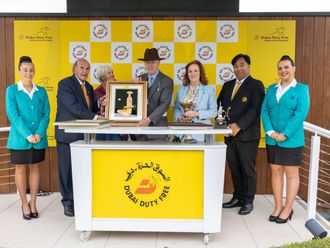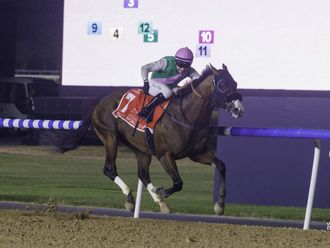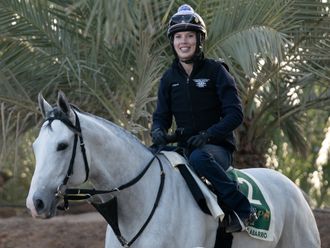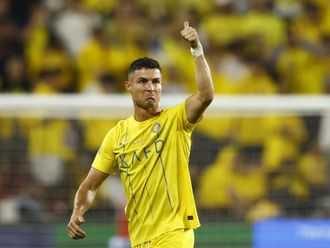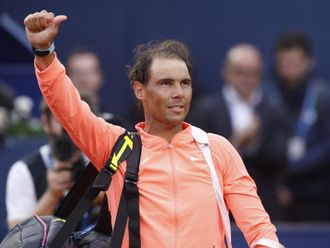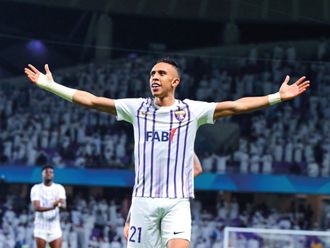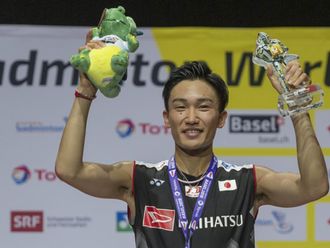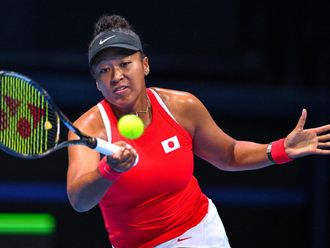
Dubai: Modest ambition has never been one of the hallmarks of His Highness Shaikh Mohammad Bin Rashid Al Maktoum, Vice-President and Prime Minister of the UAE and Ruler of Dubai.
So, it is understandable that there would be no half-measures when His Highness puts in place a strategy to develop Dubai’s racing scene.
Shaikh Mohammad has a deep respect for the history and traditions of Thoroughbred racing, which can be traced back to the origins of the breed 300 years ago when three Arabian stallions, The Darley Arabian, The Godolphin Arabian and The Byerley Turk, gave rise to the foundation lines.
His Highness is equally proud that our own Bedouin past has a similarly rich horse-sport tradition.
Thirty years ago, a dusty camel track came to represent the humblest of beginnings for Dubai’s racing industry. To be frank, it bore little in common with His Highness’s first experience of Thoroughbred racing in the 1960s, when he went to his first meeting in the very heart of British racing, Newmarket.
Today, Dubai has its own five-month racing season and some 60 meetings annually. At its heart is Meydan, the racetrack, which is now an international icon of the racing industry.
Each year it plays host to our racing centrepiece, the Dubai World Cup Carnival.
The Cup carnival attract the world’s best horses and top trainers, eyeing a massive prize pool across 10 race meetings. It culminates in the season-ending Dubai World Cup day, on the last Saturday each March. It is the richest race-day in the world, with a prize pool of $30 million (Dh110.3 million). The day ends with a flourish, the $10 million Dubai World Cup, which stands as the richest race in the world. Shaikh Mohammad’s deep-rooted passion for horse racing is a matter of very public record, with breeding and racing enterprises that span the globe.
So, you will understand his desire to place Dubai and the United Arab Emirates on the world racing map.
The Dubai World Cup meeting is a glorious celebration of Thoroughbred racing, but our racing industry is so much more.
We have successfully drawn local and international players who share His Highness’s love of racing. Their horses compete across 7/8 tracks in the UAE.
It is hard to believe, when we survey the expansive surrounds of Meydan and the state-of-the-art infrastructure available to the industry, that professional racing did not begin in the UAE until 1992. That was when the Emirates Racing Authority was formed.
The first Dubai World Cup followed in 1996, won by the great racehorse Cigar.
The early challenges were plentiful. Looking back, I suspect there were many who doubted we could build a sustainable industry without a share of the proceeds from betting, which is the lifeblood of racing in many Western countries.
Today, I am proud to say that we have consistently been a leader in terms of the prize money returned to racehorse owners, who invest considerable sums in training their animals.
In short, the UAE is a profitable place to compete a racehorse. This has been crucial in attracting quality horses. And with quality horses come quality trainers and support staff.
Even the most modest of races in the UAE carry prize money of around $15,000, which helps build returns for successful owners.
The lack of race betting in the UAE is incomprehensible to nations that have relied on gambling revenue for generations.
Shaikh Mohammad’s vision for racing began from a fundamentally different place, and it has provided us with a principled and refreshing racing dynamic.
Without gambling, we are left to enjoy the glorious athleticism of our horses and the glorious spectacle that is racing. It has provided us with a family-orientated form of entertainment.
Most people would look at this and say, it’s a rich man’s hobby… a family that loved horses and are able and willing to pay to enjoy this sport. If they thought this had been our motivation they could not have been more wrong.
The strategic objective in bringing horseracing back to its home in the Arabian Peninsula was to give the UAE’s young people a sport that they would enjoy, and that they could participate in at an industry level. In a country, which we recognised was going to go through a very rapidly changing lifestyle, it was important to revive national sports. Now with the Gulf region having one of the highest rates of diabetes in the world (37 per cent in children) those worries were valid.
Additionally, it was a vehicle to build national pride and an entry into international sports events that Shaikh Mohammad and his brothers knew well, and would be feasible to achieve with our own knowledge. Bringing a top sport events portfolio to Dubai was key to our tourism strategy, and starting with the sport we knew best was the way forward.
Lastly and perhaps for the cynics a very important point, the economic value add to Dubai of the Dubai World Cup and the Dubai Racing Carnival is over $400,000,000 per year. Between the horses who are transported here, the people that accompany them, the insurance that is paid, and all other miscellaneous items. This is of paramount importance to our economy in Dubai, and it is a key revenue stream.
Our racing milestones have been too numerous to mention. We owe our success to the thousands of people who had faith in our racing vision, from the Emirati owners who have backed the sport by investing in horses, to the hundreds of people who moved to our nation to help build the industry from scratch.
And we are taking our success further afield. Our best horses travel extensively to compete in some of the world’s premier races. They are four-legged ambassadors for our industry.
His Highness is proud that we have built our Thoroughbred racing industry while preserving its traditions and standards. We have nothing unless we acknowledge the past and give it due respect.
How does the future look? The Thoroughbred industry has always been about quality rather than quantity.
Dubai will continue to provide top quality entertainment for racing fans and good returns for successful owners, who invest well in horses. Our facilities will continue to set the standard globally, and Shaikh Mohammad is determined that racing will remain a drawcard industry for our region.
Our desert horse traditions are part of who we are. When I look at the facilities of Meydan and the fine Thoroughbreds that race on its turf, I am left in no doubt that our success is no coincidence.
We have reached this far because our love of horses is generational, the pride in our equine past deeply rooted in our souls. Meydan and our Thoroughbred industry are modern-day manifestations of His Highness’s passion for the horse.
We are not finished. In racing, as with so many things in our country, we have only just begun.
I feel nothing but excitement for the future.
In a few days, the doors of Meydan will open to welcome visitors to Dubai World Cup day. It will showcase the very best that racing can be, and the thousands who turn up on the day will see one of the great spectacles of world racing.
The Dubai World Cup is the world’s richest horse race by a comfortable margin. It is an unprecedented drawcard for talent within the global industry. It is an opportunity to not only see some of the world’s finest Thoroughbreds, but watch them race head to head.
It is the headline event on Dubai’s social calendar.
It will come as a surprise to no-one that His Highness’s diary is clear for that day.
— Princess Haya Bint Al Hussain is the Chairman of the Board at the Dubai International Humanitarian City, Member of International Olympic Committee as UAE Representative, UN Messenger of Peace, Chairperson of Sports Accord Dubai 2010, Chairperson of UAE Nursing and Midwifery Council.


